



Venice:






Associazione Guide Turistiche Venezia
|
|
Venice
Lagoon. Guided tours
A
visit to Venice is incomplete without including an excursion into
the Lagoon, the generous mother of the city which, on reflection,
has been alone responsible for its glory. Its shallows, channels
and mud banks, better than could any human hand, have protected
it from all its enemies, whether human or natural. The Lagoon, 550
square kilometres, 52 kilometres long and 8 kilometres at its widest,
is the biggest lagoon in the Mediterranean. It comprises two main
basins, of the North Lagoon and the South, the former being largely
composed of scattered islands. Between these basins lies Venice,
shaped as fish formed by 118 urban islands mostly barely discernable
in the fabric of the city surrounded by perhaps 40 islands altogether
scattered on a flat shallow lagoon.

GuideToVenice,
differently from the usual pre-packaged tours, offers various journeys
by boat into the natural and historical wonders of remote corners
of the Lagoon, often lonely and unfrequented. Your guide has an
intimate and enthusiastic knowledge of these places and their history.
Slipping unobtrusively amongst islands, salt marshes and reed beds,
shoals and channels in a bragozzo is an unforgettable experience.
From Livy to Brodsky, from Goethe to Hemingway, writers throughout
history have been inspired by these tranquil waters and the secretive
islands amongst which they flow. Here there are no bands of chattering
tourists urgent upon their next stop; exploration like this demands
a carefully chosen craft built to work these channels, slow, silent
and graceful.
GuideToVenice
has selected for you (see the link below, 'The partners of GuideToVenice')
a few small-scale specialists whose skills and interests match its
own. Whether by bragozzo or by more modern craft, carefully built
and run to avoid damaging this most delicate ecosystem, you will
indeed know that 'the journey itself is worth as much as its single
destinations'.
(click to see the boats, updated 2024)
All the tours I propose are fully custom,
tailored upon the interests of the guests.
There are no prearranged weekly scheduled
tours.
The major islands as Torcello, Burano and
Murano can be visited using public transportation and the guided
tour can be on foot.
For all the other islands you have to put
in the budget the extra cost of renting a boat with skipper.
To cut down on costs you can try to put
togheter a small group of max 12 people for the traditional bragozzo
boats or more for the bigger and more modern boats.
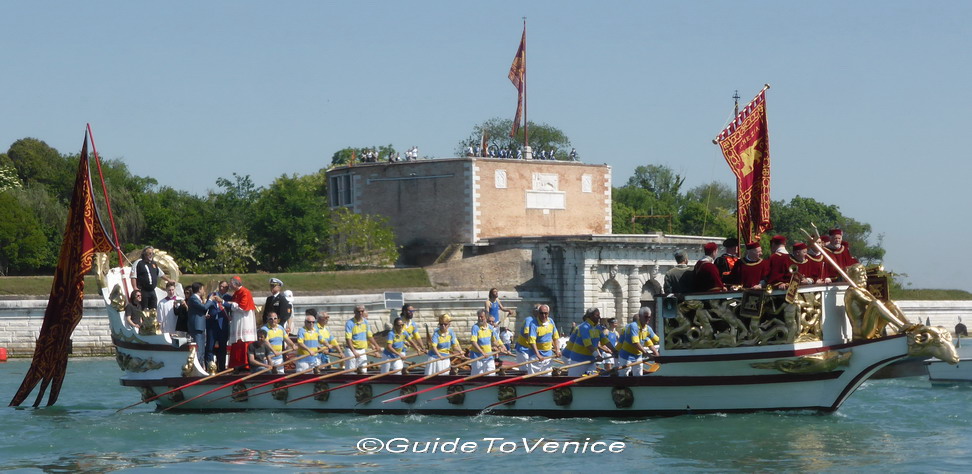
........
ITINERARIES
2024 NEWS:
I am planning new tours within
the city of Venice and to the outer islands using electric boats!
Sustainability on the water
with no wake, no pollution and no noise. Ask for pictures and info.
-------------
Spring
2024: "Ancient wheat" tour. We visit a farm in the island
of sant'Erasmo which grows ancient wheat and sells its own flour.
As no other plant wheat shaped
mankind: I will give you a brief history of domestication of wheat
side by side with the farmer on the field. If in season we will
have a close look at the artichoke's coltivations too!
THE
NORTH LAGOON (CLASSIC TOUR)
This
itinerary takes us amongst the most beautiful islands of the North
Lagoon: Torcello, Burano and San Francesco
del Deserto. After the visit to the enchanting Torcello and
the colourful Burano (see the link 'The Major Islands' for details)
our destination will be San Francesco. It has been a Franciscan
friary since 1229 and the first place in the world to boast a church
dedicated to the saint, who came here for a short period after returning
from the Holy Land. The island, truly an oasis of peace and serenity,
is open to visitors and to anyone who wishes to join the friars
for a retreat. There is a wonderful view of Burano from its gardens.
On our return towards the city we come Mazzorbo,
the - maiorbium - 'great city', whose few traces we will find amongst
the gardens and orchards that now occupy it. The only church surviving
from amongst the seven once standing amongst them is Santa
Caterina. Little visited, it is a gothic structure but on
more ancient foundations. It was restored at the end of the 20th
century and serves as a precious witness to the mediaeval lagoon.
Secluded and little frequented it lies on the southernmost tip of
Mazzorbo.

BEYOND
THE CITY
The
welfare of Venice throughout history has extended far beyond the
city itself, and this trip begins with the visit to the fortress
of Sant'Andrea, off the island of Certosa,
not far from the city, masterpiece of 16th century military architecture.
Known also as 'The Sea-castle' or the 'New Castle', it is now
uncared for and almost abandoned. It was from here that, on 20
April 1797, Bocchesi and Schiavoni launched an attack on a French
ship attempting to enter the lagoon. The consequences were disastrous
for the city; Napoleon determined that it would be take by force,
and the subsequent pillage stripped it of much of its treasure.
From the height of the fortress itself there is an excellent view
of the mouth of the port of Venice.
The next island on our programme is the nearby
Sant' Erasmo, where Torre Massimiliana,
an Austrian fortification, has been restored and can now be visited.
The island is also known as 'the market garden of Venice'.
Our trip ends on the island of Lazzaretto
Nuovo, the ancient quarantine island of La Serenissima.
From 1468 until the end of the Republic this was where crews and
ships entering the Lagoon were held and checked for contagious
diseases. It became a quarantine station and hospital during the
Great Plague, and some 10,000 people were confined there.
At present it is the site of a major archaeological study. A small
museum records this, and there is
also a hide for birdwatchers to be found on the path
around the island, from which a variety of waders and diving
birds can be easily observed over the 'barene'
(saltmarshes).

THE
NORTH LAGOON (ARCHAEOLOGICAL)
Leaving
Burano we pass into the Canale della Dolce
towards the forgotten archipelago of the islands of Costanziaca,
Ammiana and San Felice, sailing between velme (mudflats)
and saltmarshes, haunt of heron, little egret,
grebe, curlew and bittern. By the end of the Middle Ages
these islands had been partly swallowed up by the Lagoon, their
inhabitants taking to more secure homes. Their names have changed
over time, and now they are known as La Cura,
San'Ariano (where the bones of the dead, moved from the cemetery
island of San Michele, found their last resting place from 1565
to 1958), Santa Cristina (no landing)
and the one-time salt pans of San Felice or, more simply 'La
Salina' (The Salty), the last solid earth to be found in
the North Lagoon (privately owned, and accessible to clients of
GuideToVenice). La Salina has been lovingly tended for 40 years
by a caretaker. It is approached through a tortuous channel between
sea lavender flowers, saltwort and tamarisks. When we land we are
free to wander through the extensive gardens of artichokes and orchards,
in a quiet broken only by the cry of peacocks hidden amongst the
tamarisks.
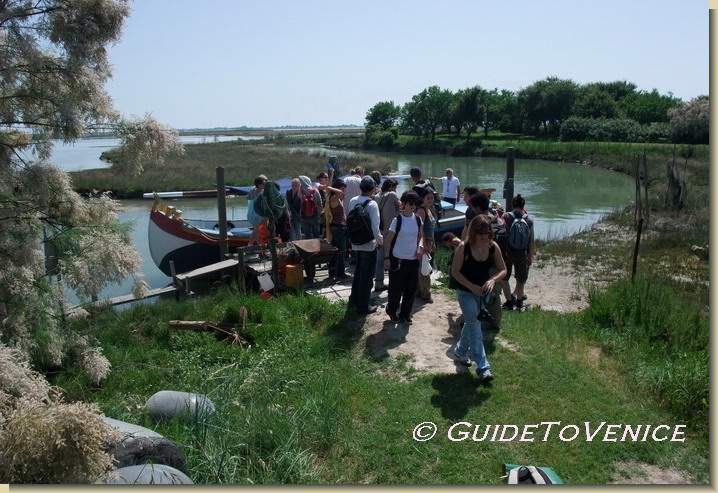
ORIGINS:
FROM HISTORY TO MYTH
GuideToVenice
can, exclusively, offer an exceptional guided tour of outstanding
historical interest. Associated with a visit to the museum
at Torcello and a survey of its archaeology, we take a leap
back in time (by boat) to the remains of the Roman city of Altino.
Through the canals of Silone, Siloncello and
Santa Maria, we sail through a wonderfully atmospheric world
of shallow mudbanks and 2-metre-tall reeds,
rich with bird-life throughout the year.
We land at Il Cormorano and walk around half a mile to the excavations
of the 1st-century-BC Roman city of Altino. The Museo
Nazionale di Altino, not much visited but presenting an astonishing
record of the excavations, displays amongst other things the most
delicate glass funerary caskets, bronzes and funerary busts dating
from the 1st century BC to the 4th AD. The open-air
mosaics, the gateway and the Roman
road probably the last strech of 'Via Annia' make a memorable
visit. Full day only.

THE SOUTH LAGOON
A
pleasing adventure to discover the strange 'Casoni'
islands built out of the lagoon itself used by fisherman
wildfowlers as shelters and workplaces, such as Cason
Zappa, Figheri amd Millecampi. This is a long trip which
includes the fishing villages of San Pietro
in Volta and Pellestrina, in the long island of the same
name before coming to the town of Chioggia.
Pellestrina shelters a wild and lonely beach behind the historical
sea wall called "Murazzi"
built in Istrian stone in the XVIII century. This is the only example
of a beach created entirely by the hand of man to protect the shoreline
from the winter storms. Full day only.
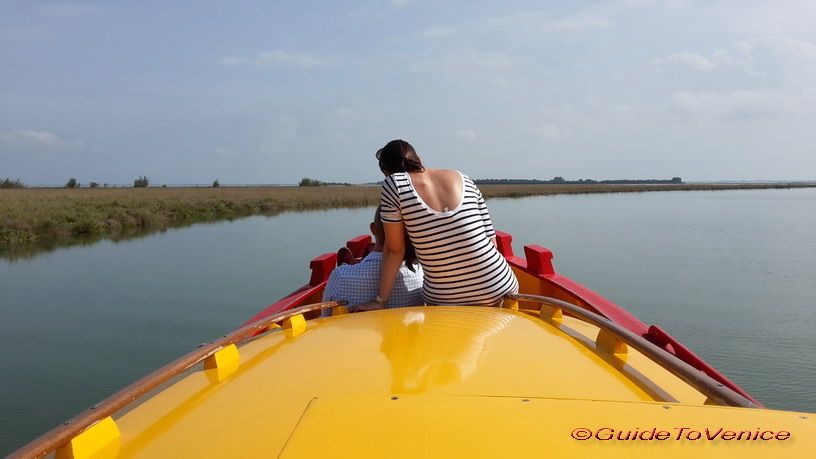
LAZZARETTO VECCHIO
The first plague isolation hospital in history
The island is currently under a slow process
of restoration and reclamation to become
the Archaeological Museum of the City and
the Lagoon of Venice
(not accesible in 2024)

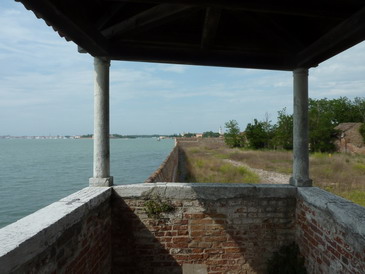
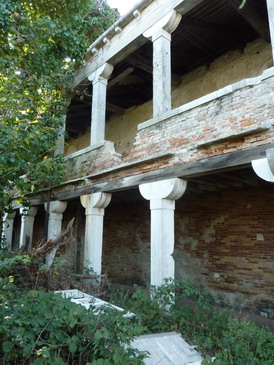

* * * * * *
|
GUIDETOVENICE
MARTINO RIZZI
Cell. +39 3289485671
|
|
|
|
















